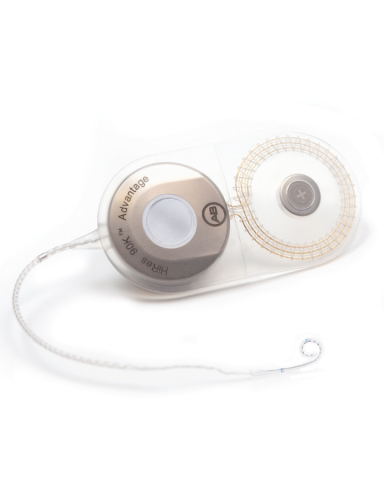VALENCIA, Calif.--(BUSINESS WIRE)--Advanced Bionics (AB), a global leader in cochlear implant technology and a company of the Sonova Group, announced today that the HiRes 90K™ Advantage cochlear implant, with the HiFocus™ 1J, HiFocus Helix™, and HiFocus™ Mid-Scala electrodes, has received CE Mark approval from the European Notified Body, TÜV, to be implanted in patients with unilateral (asymmetric) hearing loss, also known as single-sided deafness (SSD).
Three recent study reviews show that SSD patients with cochlear implants have improved sound localization abilities and better perception of speech in noise, two areas of considerable difficulty for people with unilateral hearing [1,2,3]. Studies have also shown that SSD patients who did not benefit from other implantable options received significant benefit from cochlear implants [4,5].
Advanced Bionics offers industry-leading speech understanding solutions, including ClearVoice™ speech enhancement technology and UltraZoom, in the Naída CI family of sound processors. The combination of AB and Phonak technologies makes the Naída CI the most advanced sound processor available, offering high-performance hearing in all environments, 100% wireless connectivity to consumer electronics, and bimodal capabilities that allow streaming to the processor and a compatible Phonak hearing aid at the same time.
“We are pleased that patients with single-sided deafness can now benefit from our cochlear implant technology,” said Hansjuerg Emch, President of Advanced Bionics and Group Vice President of the Sonova Medical Division within which AB resides.
The newest AB electrode array, the HiFocus Mid-Scala electrode, was designed for optimal placement in the cochlea with low insertion force to protect its delicate structures, and promotes the latest soft surgery approaches to suit surgeon preferences. As a result, the HiFocus Mid-Scala offers recipients the opportunity to hear the most pitches possible for enjoying music and improved speech understanding.
For more information about AB’s innovative hearing technology, visit AdvancedBionics.com, or follow AB on Facebook, Twitter, YouTube, and Pinterest.
About Advanced Bionics
Advanced Bionics is a global leader in developing the most advanced cochlear implant systems in the world. Founded in 1993 and a subsidiary of the Sonova Group since 2009, AB develops cutting-edge cochlear implant technology that allows recipients to hear their best.
AB offers the most sophisticated cochlear implant system on the market, the HiResolution™ Bionic Ear System, with five times more sound resolution than its competitors, designed to help recipients hear in noisy settings and enjoy the full dimensions of music and tonal languages.
With sales in over 50 countries and a proven track record for developing high-performing, state-of-the-art products, AB’s talented group of technologists and professionals from all over the world are driven to succeed, work with integrity and stay firmly committed to quality.
To learn more about AB and its innovative cochlear implant technology, please visit AdvancedBionics.com.
[1] Blasco, M.A. and M.I. Redleaf, Cochlear Implantation in Unilateral Sudden Deafness Improves Tinnitus and Speech Comprehension: Meta-Analysis and Systematic Review. Otology & Neurotology, 2014.
[2] Tokita, J., C. Dunn, and M.R. Hansen, Cochlear implantation and single-sided deafness. Current opinion in otolaryngology & head and neck surgery, 2014.
[3] Vlastarakos, P.V., et al., Cochlear implantation for single-sided deafness: the outcomes. An evidence-based approach. European archives of oto-rhino-laryngology, 2014. 271(8): p. 2119-26.
[4] Arndt, S., et al., Comparison of pseudobinaural hearing to real binaural hearing rehabilitation after cochlear implantation in patients with unilateral deafness and tinnitus. Otology & Neurotology, 2011. 32(1): p. 39-47.
[5] Arndt, S., et al., The University of Freiburg Asymmetric Hearing Loss Study, in Cochlear science and research seminar; Asymmetric hearing loss, 2011, Audiology & Neurotology: Interlaken, Switzerland. p. 5.




